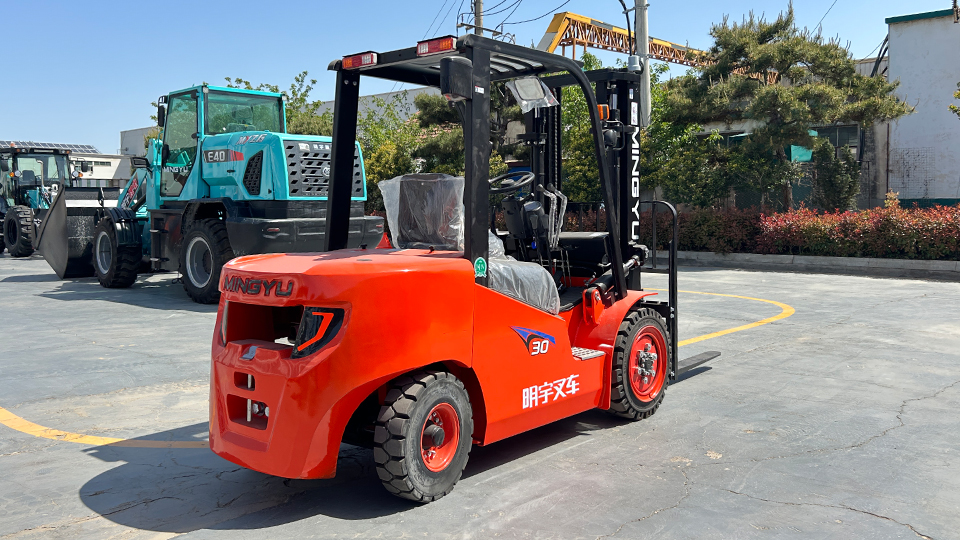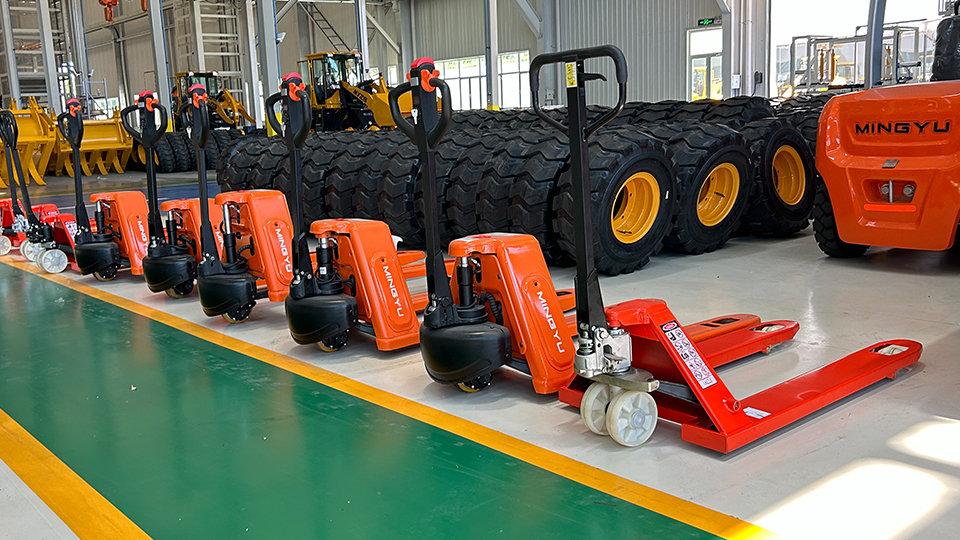
Executive summary
Propane (LPG) forklifts do not have a “radiator fill” or “engine coolant” port that is labeled water. Instead, there are three separate places where water or water-based fluids may legitimately be added, depending on the subsystem you are servicing:
The radiator pressure cap (engine cooling system – 50/50 coolant, not plain water).
The battery cells (only on electric forklifts – distilled water).
The LPG vaporizer/regulator (a very small quantity of methanol-rich antifreeze or warm water for thawing, not for routine filling).
Because operators frequently say “put water in the propane forklift” when they really mean one of the above, this article walks through each location, the right fluid, the safety steps, and the regulatory citations. It also explains why plain water is almost never the correct choice in any of these systems.
Quick myth-buster
Myth: “I need to add water to the propane tank so the forklift doesn’t overheat.”
Reality: A propane cylinder contains liquid petroleum gas. Introducing any water into the cylinder would freeze, sink to the bottom, and block the liquid withdrawal tube—creating an immediate safety hazard . Never open the cylinder valve to add water.
2. Case 1—Engine cooling system (radiator)
2.1 Where is the radiator cap?
• IC cushion-tire trucks (Toyota 8-Series, Hyster S50CT, Cat GP25N, etc.) – Open the rear engine cover; the cap is on the left or right side of the radiator top tank.
• IC pneumatic-tire trucks (Toyota 8FGU25, Mitsubishi FG30K, etc.) – Remove the counter-weight access panel; the cap faces the operator.
• Compact “box-car” trucks (Crown C-5, Komatsu AX50) – The cap is behind a flip-up grille at the front of the truck.
2.2 What fluid?
• Year-round climates: 50 % ethylene-glycol / 50 % distilled water (or pre-mix).
• Sub-freezing warehouses: 60 % glycol / 40 % water for burst protection to −34 °F (−37 °C).
• Emergency only: If you are stranded and must use plain water, add corrosion inhibitor and replace with glycol mix at the earliest opportunity.

2.3 Procedure (OSHA 1910.95)
Park on level ground, forks down, engine off, cool down 15 min.
PPE: face shield, nitrile gloves, long sleeves.
Pressure-test cap (13–16 psi). Replace if the spring is weak.
Fill slowly to 1 inch below the filler neck. Squeeze upper radiator hose to burp air.
Overflow tank – top up to the MAX line.
Leak check at idle for 5 min; look for green or pink residue.
2.4 Labels you will see
A yellow or black decal that reads “COOLANT ONLY—DO NOT ADD STRAIGHT WATER.” If the decal is missing, create a new one with a P-touch tag.
3. Case 2—Lead-acid battery watering (electric trucks only)
3.1 Identification
If your propane forklift is dual-fuel (LPG/DC), it has a lead-acid traction battery. The watering procedure is identical to pure electric units.
3.2 Where are the fill holes?
• Standard batteries (GBC, Deka, Exide): six flip-top vent caps on the battery lid.
• Single-point watering kits (Philadelphia Scientific, BFS): blue or gray manifold with quick-coupler on the right side of the battery box.
3.3 What water?
Distilled or de-ionized water only (conductivity < 10 µS/cm). Tap water minerals coat plates and shorten life.
3.4 Procedure (Raymond West best practices)
Charge battery to 100 % (electrolyte expands).
PPE: acid-resistant apron, goggles, face shield.
Open vent caps or connect single-point gun.
Fill to ¼ inch above plates or to the indicator line on translucent jars.
Record water added (liters) on the battery log for trending sulfation.
3.5 Common mistakes
• Topping up before charging → electrolyte overflows during gassing.
• Using garden hose water → calcium sulfate scale in 90 days.
4. Case 3—Vaporizer/regulator thawing (rare, winter only)
4.1 Why water is sometimes mentioned
When moisture in propane freezes inside the vaporizer or first-stage regulator, the engine starves for fuel. OEM service manuals allow a temporary external warm-water bath—but no water is added into the forklift.
4.2 Safe thawing steps (Toyota 4Y service bulletin)
Shut off cylinder valve.
Remove regulator (two 14 mm bolts).
Immerse the brass body in a bucket of 100–110 °F (38–43 °C) water for 10 min.
Shake out excess water, dry with compressed air, reinstall.
Leak-test with soapy water.
4.3 Permanent fix
Install a methanol drip bottle (5 % methanol in propane) or switch to HD-5 spec propane with < 0.001 % water content.
5. Where not to add water
• Propane cylinder – Never. Water will sink, freeze, and rupture the dip tube .
• Air cleaner / intake hose – Water ingestion hydro-locks the engine.
• Transmission or hydraulic reservoir – Use specified oil only.
• Fuel filter bowl (liquid propane side) – Use denatured alcohol sparingly, per OEM.
6. Color-coded caps and labels to reduce mistakes
Facility-wide standard:
• Blue cap or label = distilled water (battery).
• Green cap = engine coolant fill.
• Red cap = hydraulic oil.
• Yellow cap = transmission oil.
A laminated 4×6 inch sign posted on the service wall eliminates “where do I put the water?” questions.
7. Training script for new operators (2-minute drill)
“Show me the radiator cap.”
“Show me the battery vent caps.”
“Why don’t we add water to the propane tank?” (Answer: It sinks, freezes, and blocks fuel.)
Demonstrate PPE and lock-out/tag-out.
The script fits into OSHA’s 1910.178(l)(3) operator refresher requirement.
8. Troubleshooting chart
Symptom Likely cause Correct fluid/action Section
Engine temp gauge in red Low coolant 50/50 glycol mix 2
White crystal on regulator Ice from moisture Warm-water bath, then methanol 4

Battery SG < 1.220 Low electrolyte Distilled water top-up 3
Forklift stops but tank half full Regulator iced See 4 4
9. Quick reference stickers
Print on weather-proof vinyl and stick on the inside of the engine cover:
“Coolant fill: green cap, rear left. Battery water: blue manifold, right side. NO WATER IN PROPANE TANK.”
10. Summary checklist (laminate & post)
☐ Coolant – 50/50 mix at radiator cap, not plain water.
☐ Battery – Distilled water after charge, not before.
☐ Propane system – No water ever; thaw regulator externally if needed.
☐ Verify correct cap color and label.
☐ Document any fluid added on the daily inspection sheet.
By following the locations and procedures above, you will eliminate the confusion around “where do I put the water in a propane forklift,” protect equipment, and stay compliant with OSHA, ANSI B56.1, and NFPA 58.
Name: selena
Mobile:+86-13176910558
Tel:+86-0535-2090977
Whatsapp:8613181602336
Email:vip@mingyuforklift.com
Add:Xiaqiu Town, Laizhou, Yantai City, Shandong Province, China